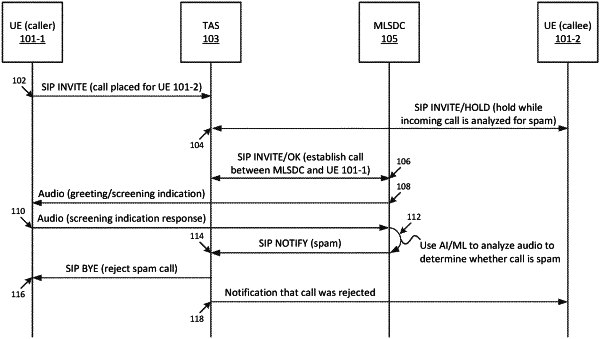| CPC H04L 65/1079 (2013.01) [G06N 20/00 (2019.01); H04W 80/10 (2013.01)] | 20 Claims |

|
1. A device, comprising:
one or more processors configured to:
receive a first request to establish a first call between a first User Equipment (“UE”) and a second UE;
notify the second UE of the first request to establish the first call;
receive, from the second UE, a second request to indicate whether the first request to establish the first call is associated with a particular classification;
determine, based on receiving the second request, whether the first request is associated with the particular classification; and
output, to the second UE, an indication of whether the first request is associated with the particular classification,
wherein when the indication indicates that the first request is associated with the particular classification, the second UE forgoes outputting a notification, to a user of the second UE, of the first request; and
wherein when the indication indicates that the first request is not associated with the particular classification, the second UE outputs the notification, to the user of the second UE, of the first request.
|